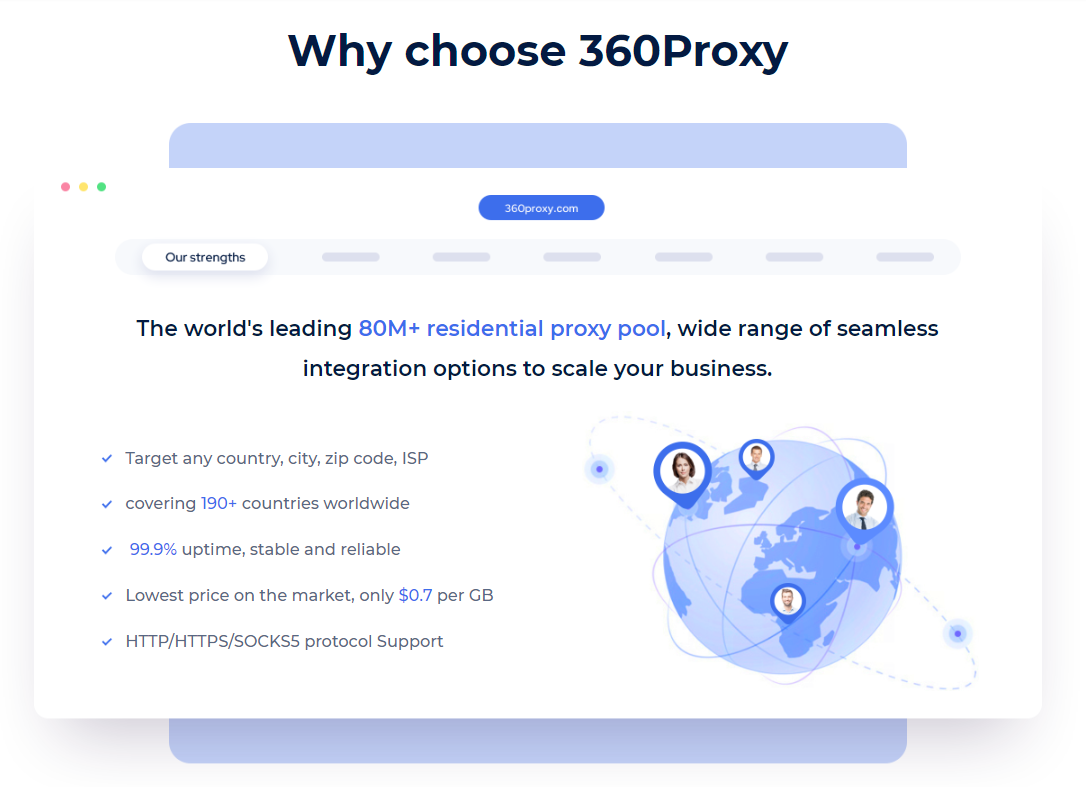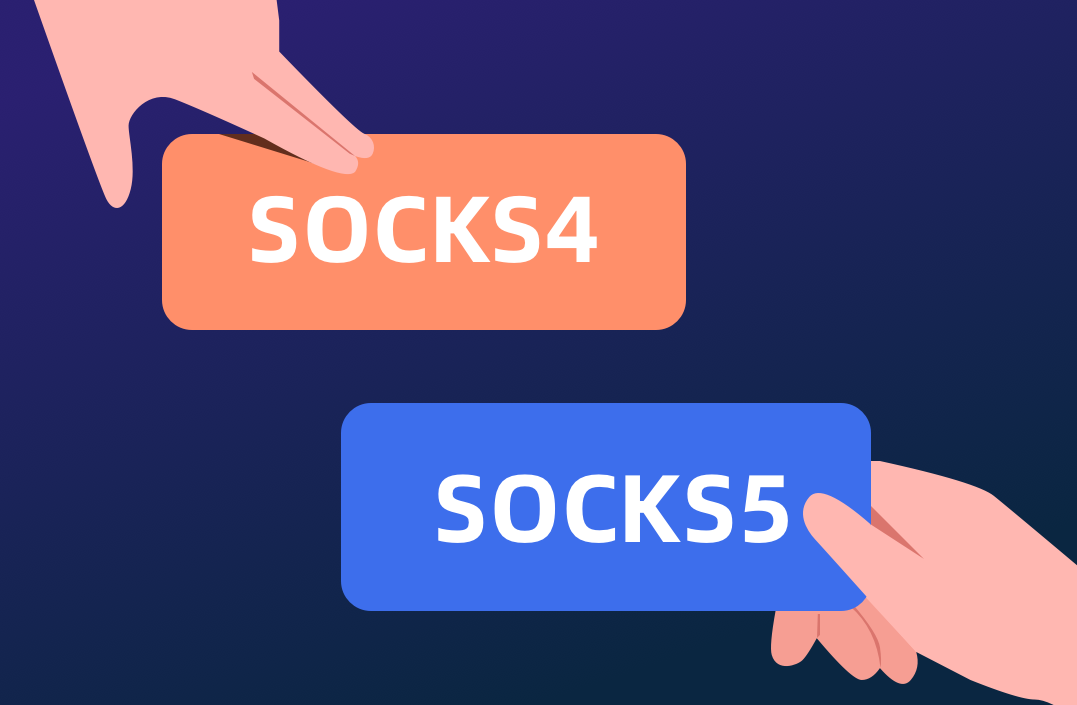In the world of networking protocols, SOCKS (Socket Secure) stands out as a versatile and widely used framework for communication between clients and servers. Among its variants, SOCKS4 and SOCKS5 are two prominent versions, each with its unique features and applications. In this article, we'll embark on a journey to compare SOCKS5 and SOCKS4, exploring their functions and delving into the respective application scenarios where they shine.
Understanding SOCKS: An Overview
SOCKS4 - The Pioneering Protocol
SOCKS4, an early version of the SOCKS protocol, was introduced in the mid-1990s. Its primary purpose is to facilitate communication between a client and a server through a proxy. SOCKS4 operates at the transport layer, providing a framework for routing packets between the client and the server without revealing the client's identity.
SOCKS5 - The Enhanced Successor
SOCKS5, an evolution of SOCKS4, was introduced later to address certain limitations and enhance security. In addition to the functionalities of SOCKS4, SOCKS5 offers improved authentication mechanisms, support for various authentication methods, and the ability to establish UDP (User Datagram Protocol) connections.
Key Differences: SOCKS5 vs. SOCKS4
1. Authentication Mechanisms
SOCKS4:
SOCKS4 supports a basic, non-authenticated connection.
It relies on a simple IP address-based authentication method.
SOCKS5:
SOCKS5 introduces a more robust and flexible authentication framework.
It supports various authentication methods, including username/password authentication and the widely used GSS-API (Generic Security Services Application Program Interface).
SOCKS4 does not support username/password authentication, while SOCKS5 does. This means that when using a SOCKS5 proxy, you can set a username and password to authenticate to specific network resources. In a SOCKS4 proxy, you need to use a specific IP address and port number to access resources.
2. Protocol Support
SOCKS4:
Primarily designed for TCP (Transmission Control Protocol) connections.
Lacks support for UDP, limiting its application scope.
SOCKS5:
Supports both TCP and UDP connections, providing a broader range of applications.
The UDP support is particularly beneficial for applications such as online gaming and real-time communication protocols.
3. Address Resolution
SOCKS4:
Operates with IPv4 addresses only.
Limited in handling modern networking requirements.
SOCKS5:
Supports both IPv4 and IPv6 addresses, ensuring compatibility with the evolving internet infrastructure.
Facilitates more advanced networking scenarios and applications.
4. Security
SOCKS5 provides better security as it supports encryption methods to protect data transmission. SOCKS4 only supports data transmission without encryption, which makes it possible for data to be intercepted or tampered with during transmission.
5. Protocol support
SOCKS5 supports more protocols, including HTTP, HTTPS, FTP, etc., which means it can be applied to more network scenarios. SOCKS4 mainly supports the TCP protocol, and its application scope is relatively narrow.
Application Scenarios
SOCKS4:
Suited for scenarios where basic, non-authenticated proxy connections are sufficient.
Limited application in modern networking environments due to its lack of support for advanced authentication and protocols.
SOCKS5:
Ideal for scenarios requiring secure and authenticated connections.
Well-suited for modern internet applications, especially those leveraging UDP connections.
Respective Application Scenarios
SOCKS4 Applications
Basic Web Browsing:
SOCKS4 can be suitable for basic web browsing scenarios where the emphasis is on simplicity and the user's primary concern is anonymity rather than advanced security features.
Simple Data Retrieval:
Applications that require straightforward data retrieval, such as fetching emails or accessing static web content, may find SOCKS4 sufficient.
SOCKS5 Applications
Secure File Transfer:
SOCKS5's advanced authentication mechanisms make it ideal for scenarios involving secure file transfers. The support for username/password authentication enhances data protection.
Real-Time Communication:
Applications that rely on real-time communication, such as VoIP (Voice over Internet Protocol) or video conferencing, benefit from SOCKS5's UDP support, ensuring efficient data transmission.
Online Gaming:
Online gaming often involves UDP connections for real-time updates. SOCKS5, with its UDP support, is better suited for providing low-latency and reliable connections in the gaming environment.
Use in different scenarios
1. Home network environment
In a home network environment, using SOCKS5 proxy can better protect your privacy and security. You can control access to specific network resources by authenticating with a username and password. At the same time, since SOCKS5 supports multiple protocols, you can use it to access various types of websites and services.
2. Company network environment
In a corporate network environment, security is critical. Since SOCKS5 supports encrypted data transmission, it can better protect the security of the company's internal network. At the same time, you can better control access to your company's internal network resources by using username and password for authentication.
3. Public network environment
In public network environments, such as coffee shops, airports and other places, using SOCKS5 proxy can better protect your privacy and security. By using username and password for authentication, you can control access to specific network resources and avoid unnecessary risks. At the same time, since SOCKS5 supports multiple protocols, you can easily access various types of websites and services.
Conclusion
In conclusion, while both SOCKS4 and SOCKS5 serve as crucial components in proxy communication, their differences in authentication mechanisms, protocol support, and application scenarios set them apart. SOCKS4, with its simplicity and basic functionality, finds relevance in scenarios where uncomplicated proxy connections are sufficient. On the other hand, SOCKS5, with its advanced features, is well-suited for applications demanding robust security, support for multiple authentication methods, and compatibility with modern networking protocols.
Understanding the strengths and weaknesses of each protocol empowers users to make informed decisions based on their specific needs. Whether it's the basic anonymity of SOCKS4 or the advanced security and versatility of SOCKS5, choosing the right protocol ensures that your proxy communication aligns seamlessly with the requirements of the evolving digital landscape.
360Proxy provides 100% real residential proxy resources, covering 190+ countries and regions, and 80M+ residential IP resources. Support multiple network protocols.To meet the different needs of users, such as media account management, ESTY and SEO optimization, 360Proxy is a good assistant that can provide huge help!

 Username: Password
Username: Password
 Whitelist IP
Whitelist IP
 Proxy Manager
Proxy Manager
 Google Chrome Extension
Google Chrome Extension





























 Dashboard
Dashboard Sign Out
Sign Out






























 USA
USA France
France Brazil
Brazil Vietnam
Vietnam Spain
Spain









